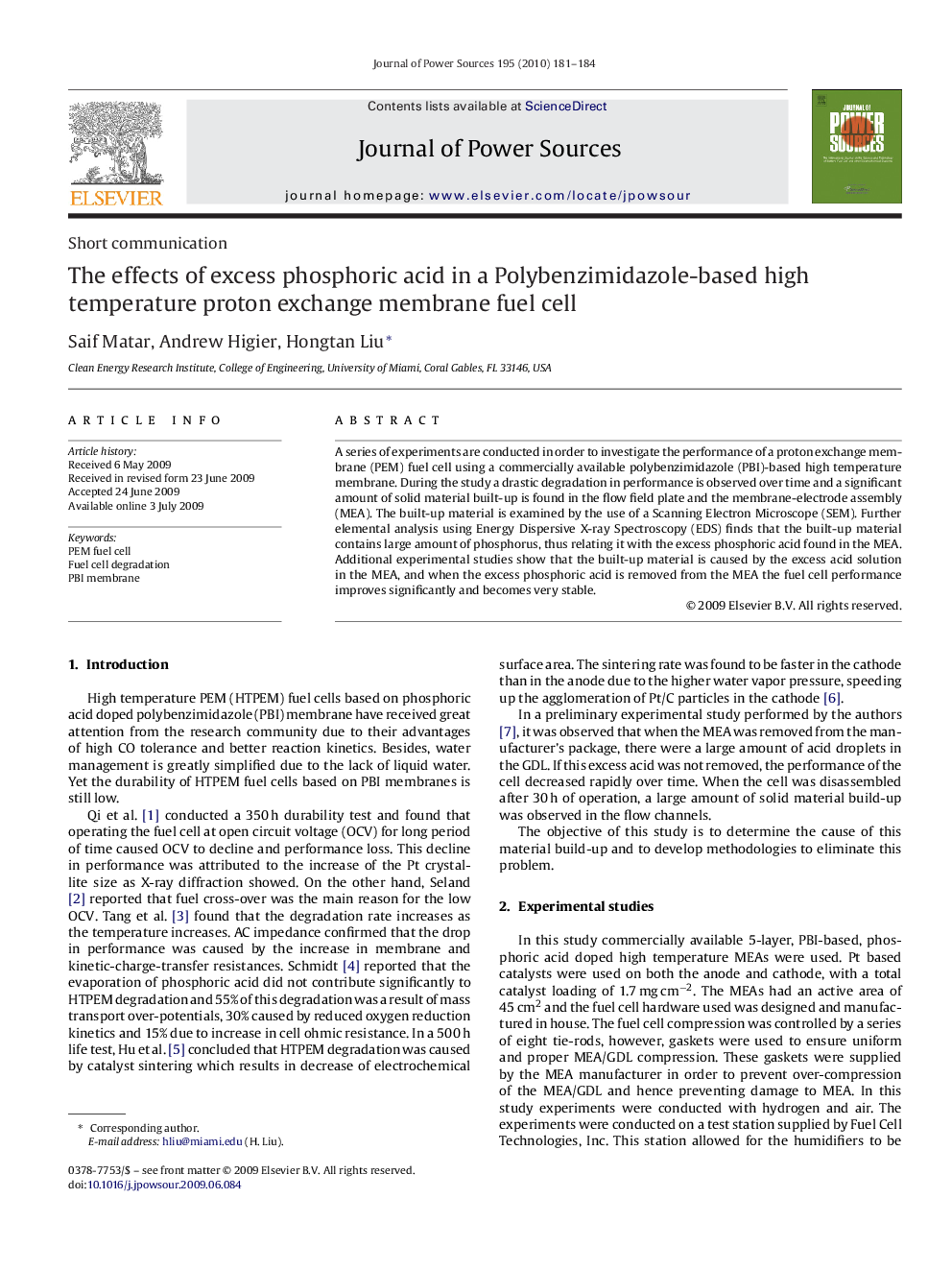| Article ID | Journal | Published Year | Pages | File Type |
|---|---|---|---|---|
| 1293966 | Journal of Power Sources | 2010 | 4 Pages |
A series of experiments are conducted in order to investigate the performance of a proton exchange membrane (PEM) fuel cell using a commercially available polybenzimidazole (PBI)-based high temperature membrane. During the study a drastic degradation in performance is observed over time and a significant amount of solid material built-up is found in the flow field plate and the membrane-electrode assembly (MEA). The built-up material is examined by the use of a Scanning Electron Microscope (SEM). Further elemental analysis using Energy Dispersive X-ray Spectroscopy (EDS) finds that the built-up material contains large amount of phosphorus, thus relating it with the excess phosphoric acid found in the MEA. Additional experimental studies show that the built-up material is caused by the excess acid solution in the MEA, and when the excess phosphoric acid is removed from the MEA the fuel cell performance improves significantly and becomes very stable.
